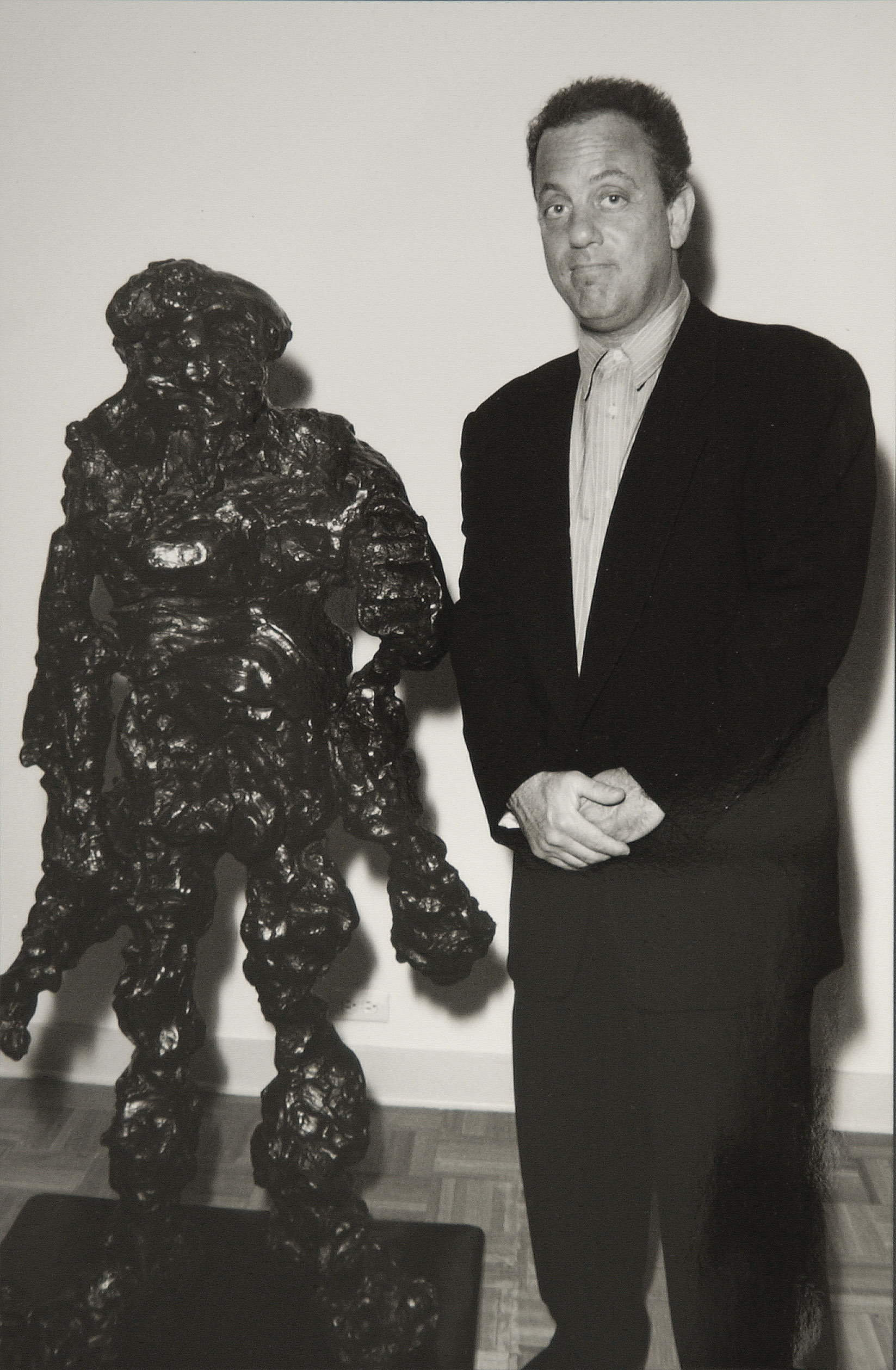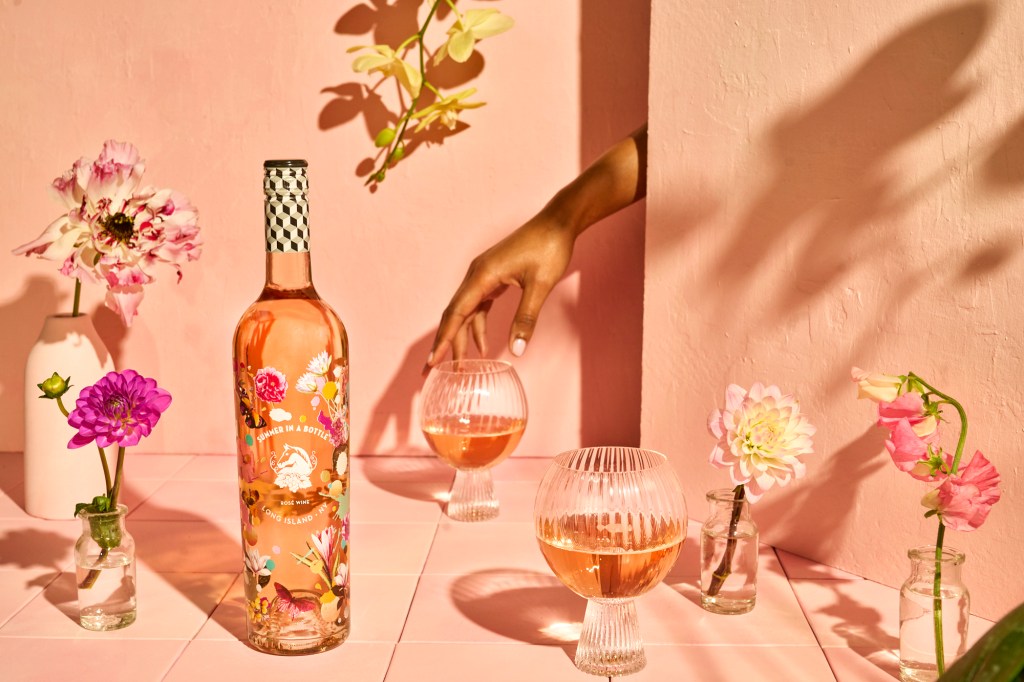9 Decades of Guild Hall Historical Highlights
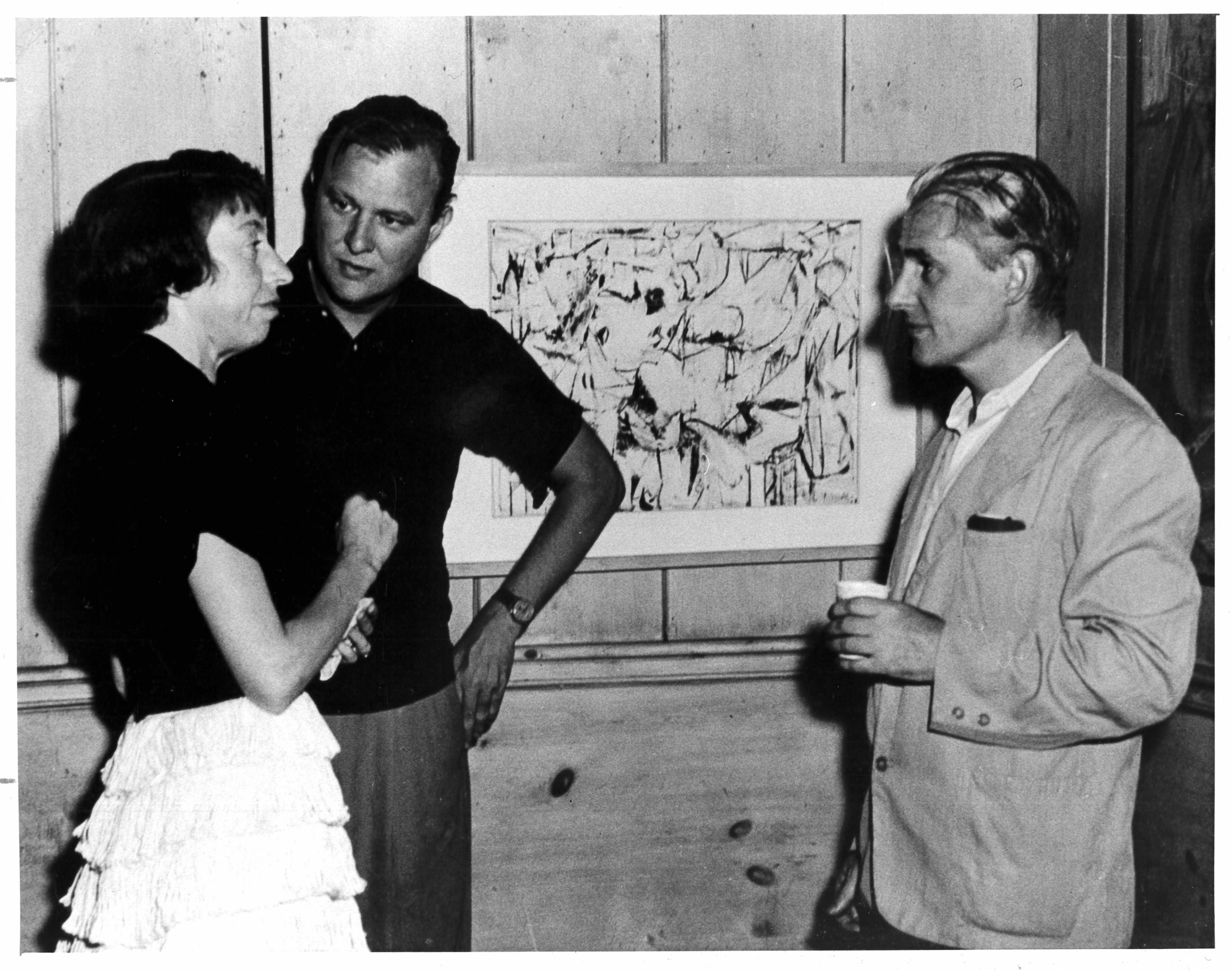
Serving as the epicenter of the East Hampton arts community for 90 years, Guild Hall has been a key player in many cultural developments and newsworthy moments throughout the village’s history. Take a journey through nine decades of historical highlights at Guild Hall.
1930s:
— Founded by philanthropist Mary Woodhouse, Guild Hall opens on August 19, 1931, in the depths of the Great Depression, and becomes the first cultural center in the country to combine a theater, museum and community meeting place.
— Later that year, Cornelia Otis Skinner is the first star to grace the stage of the John Drew Theater, appearing in her one-woman show, The Six Wives of Henry VIII.
— WWII brings the community together, with bandages being made at Guild Hall for the Red Cross.
— Guild Hall becomes a favorite of Edith “Little Edie” Bouvier Beale.
— In 1939, Guild Hall exhibits a show with watercolors from the New Deal WPA arts project.
1940s:
— To distract from the anxieties of war, 16 exhibitions are mounted in the summer of 1940 including one for Guild Hall architect Aymar Embury, II (best known for the Triboro, Henry Hudson and Bronx-Whitestone bridges).
— In 1943, the Red Cross collects 240 pints of blood from 350 donors at Guild Hall, the largest amount taken anywhere in Suffolk County.
— During war years, one gallery is transformed into an officer’s lounge, and there are regular dances for servicemen.
— Estelle Winwood opens a 10-play series with The Royal Family.
— In 1946, Thornton Wilder appears on the stage of the John Drew Theater in the role of stage manager for his Pulitzer Prize-winning play, Our Town.
— In the summer of 1949, Guild Hall introduces Jackson Pollock, Lee Krasner and other abstract expressionists in Seventeen Artists of Eastern Long Island. During this time, Jackson Pollock’s famous Life magazine article is released, catapulting him to superstardom while his work hung in Guild Hall’s galleries.
1950s:
— Lee Marvin and Victor Jory appear onstage in The Spider.
— In 1951, you can visit Guild Hall and buy a Pollock for $250, a James Brooks for $350 and a Robert Motherwell for $200.
— In 1951, Bob Fosse and Gwen Verdon star in Pal Joey.
— In 1953, a selection from Twelve East Hampton Collections includes a Pollock from Daniel Miller, owner of the Springs General store where Pollock used to pay for groceries with art.
— In 1954, Lucille Manners appears in Song of Norway. Jessica Tandy and Hume Cronyn present Face to Face, ahead of coast-to-coast tour.
— In 1956, Truman Capote bids frantically for a wicker chair at Guild Hall’s furniture auction.
— Thirteen Artists of the Region, with Pollock works, had just opened when Pollock was killed in an auto accident on August 11, 1956.
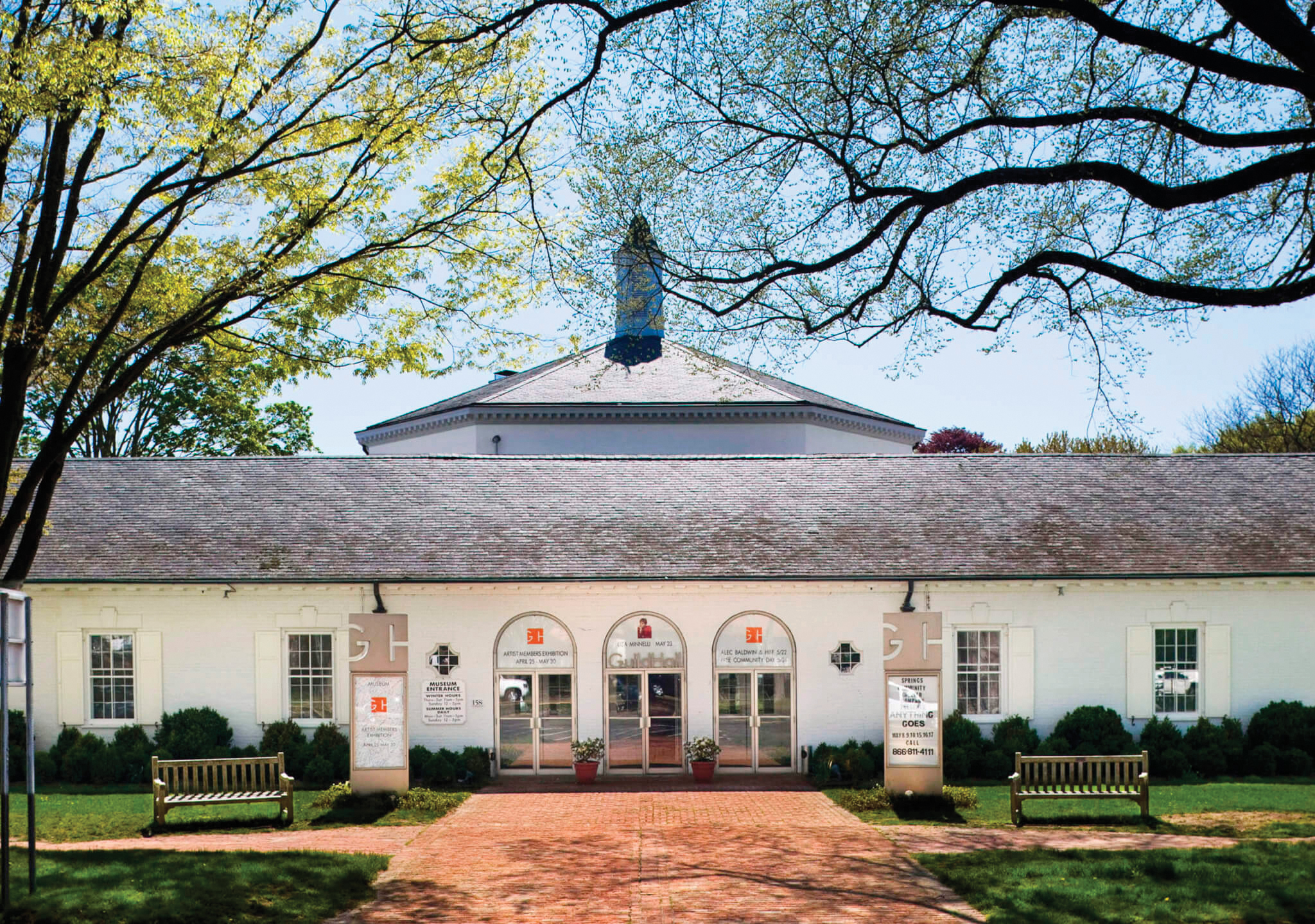
1960s:
— In 1960, The Fantasticks, struggling in its first year off-Broadway, visits Guild Hall for a short summer run and then returns to NYC in triumph, later becoming the world’s longest running musical.
— Founder Mary Woodhouse dies in 1961 at age 96 and is mourned by all. Trustee tribute: “Guild Hall, enshrined in the hearts of all East Hampton, stands as a living memorial to the generosity and vision of a truly great woman. For 30 years, drama and music have been fostered and have enriched lives. Mrs. Woodhouse’s beauty, grace and understanding were qualities that glowed and inspired. Her prayerful interest in the purposeful Guild Hall has given strength to others to be worthy of the trust.”
— Jeffrey Lynn stars in Critic’s Choice.
— Spring Festival of the Arts, co-sponsored with Southampton College, bring theatrical stage and costume designers’ works to the galleries, including Broadway model sets from Edward Albee’s Tiny Alice and Peter Dohano’s Kataki.
— Burglars break into Guild Hall in 1967 but enter an empty gallery, while another gallery was filled with priceless art for the upcoming exhibition The Little Show. This is the year of the first bank robbery and narcotics raid in East Hampton.
1970s:
— A new wing opens on June 6, 1970, A Day in the Life of Guild Hall, lasts all day, attracting over 2,000 visitors: The theater presents Guys and Dolls rehearsals, Max Pollikoff and his orchestra, concert pianist William Macellos, dancers, singers, sketching classes and tours.
— Christophe deMenil and Calvert Cogehshall arrange Nineteenth-Century Country Art.
— In 1972, Edward Albee serves as director of the John Drew Theater for the summer season.
— In 1973, American jazz drummer and bandleader Foreststorn “Chico” Hamilton performs a special concert for East Hampton school children while building a home in Springs.
— In 1973, Guild Hall receives accreditation from the American Association of Museums (at that time only 223 museums out of 5,600 receive this).
— Also in 1973, Gwen Verdon hosts a dance benefit for Guild Hall featuring Peter Gennaro, James Lipton, Cy Coleman, Carmen DeLavallade and Geoffrey Holder.
— Phoenix Theatre, with a reputation for 20 years of high-quality productions, signs on as resident company in 1974.
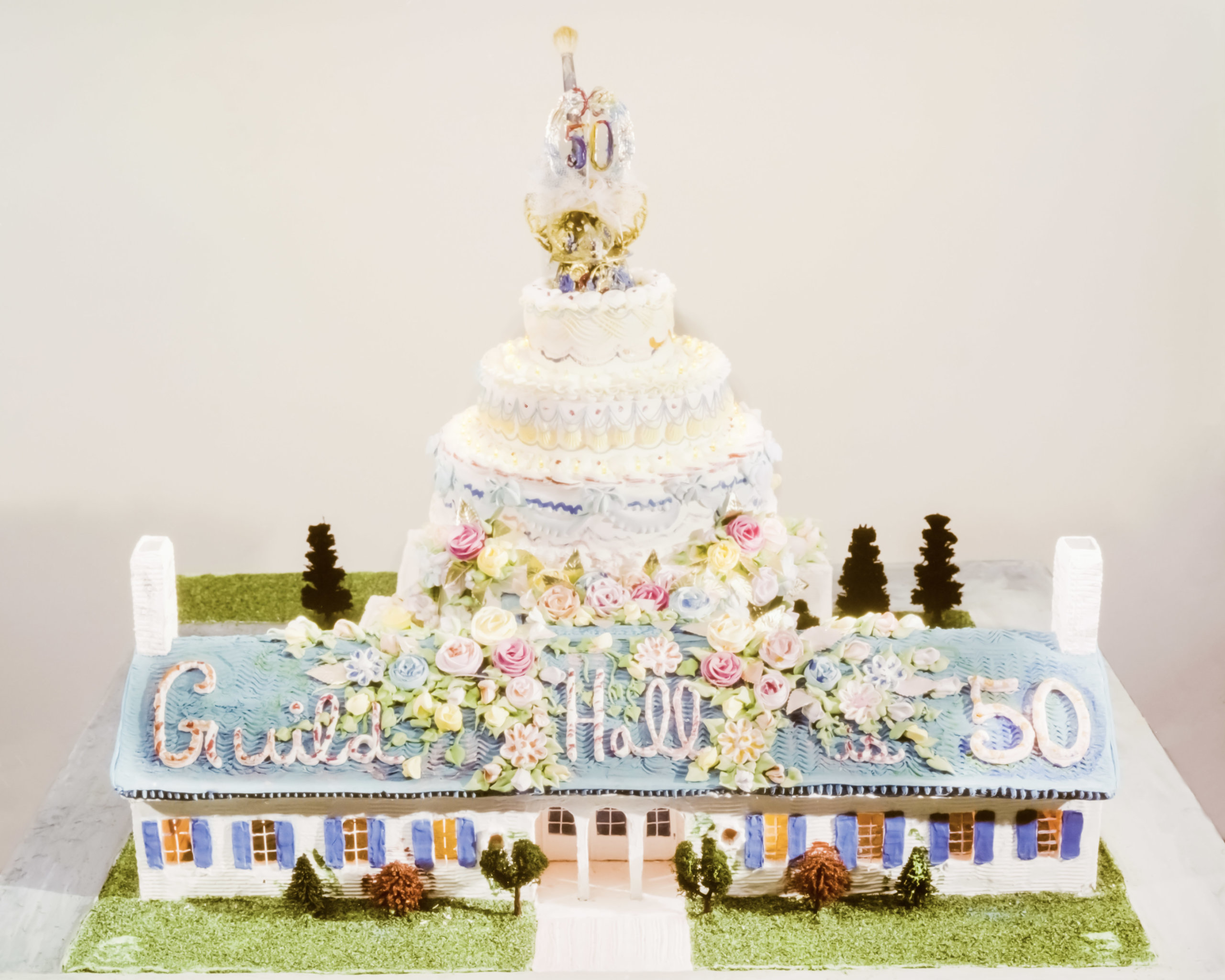
1980s:
— Guild Hall presents the world premiere of April Song with Glynis Johns (Helen Hayes comes to see her play the role she played 23 years prior with Richard Burton).
— Alfonso Ossorio: 1940-1980 is curated by Judith Wolfe and presented in all three galleries and garden.
— In 1981, Guild Hall celebrates its 50th anniversary with 50 events.
— Three commemorative posters are created by Fernando Botero, Jane Freilicher and Larry Rivers
— The Guggenheim, MET, MOMA and the Whitney participate in the exhibition East Hampton/New York: New York Museums Salute Guild Hall at M. Knoedler & Co.
— In August of 1981, the Night of Stars revue brings back performers associated with Guild Hall’s history including Betty Comden, Adolph Green, Uta Hagen, Sheldon Harnick, Helen Hayes, Anne Jackson, Eli Wallach and Carlos Montoya with special effects by a young Bran Ferren, who had just worked on the Broadway show Frankenstein. Larry Rivers creates a birthday cake sculpture of Guild Hall displayed in the foyer.
— In 1985, Guild Hall presents its first annual Lifetime Achievement in the Arts Awards to Kurt Vonnegut, Alan Alda and Willem de Kooning followed by the founding of the Academy of the Arts the following year by Roy Lichtenstein, Frank Perry, Peter Jennings, Elaine Steinbeck, Henry Geldzahler and more.
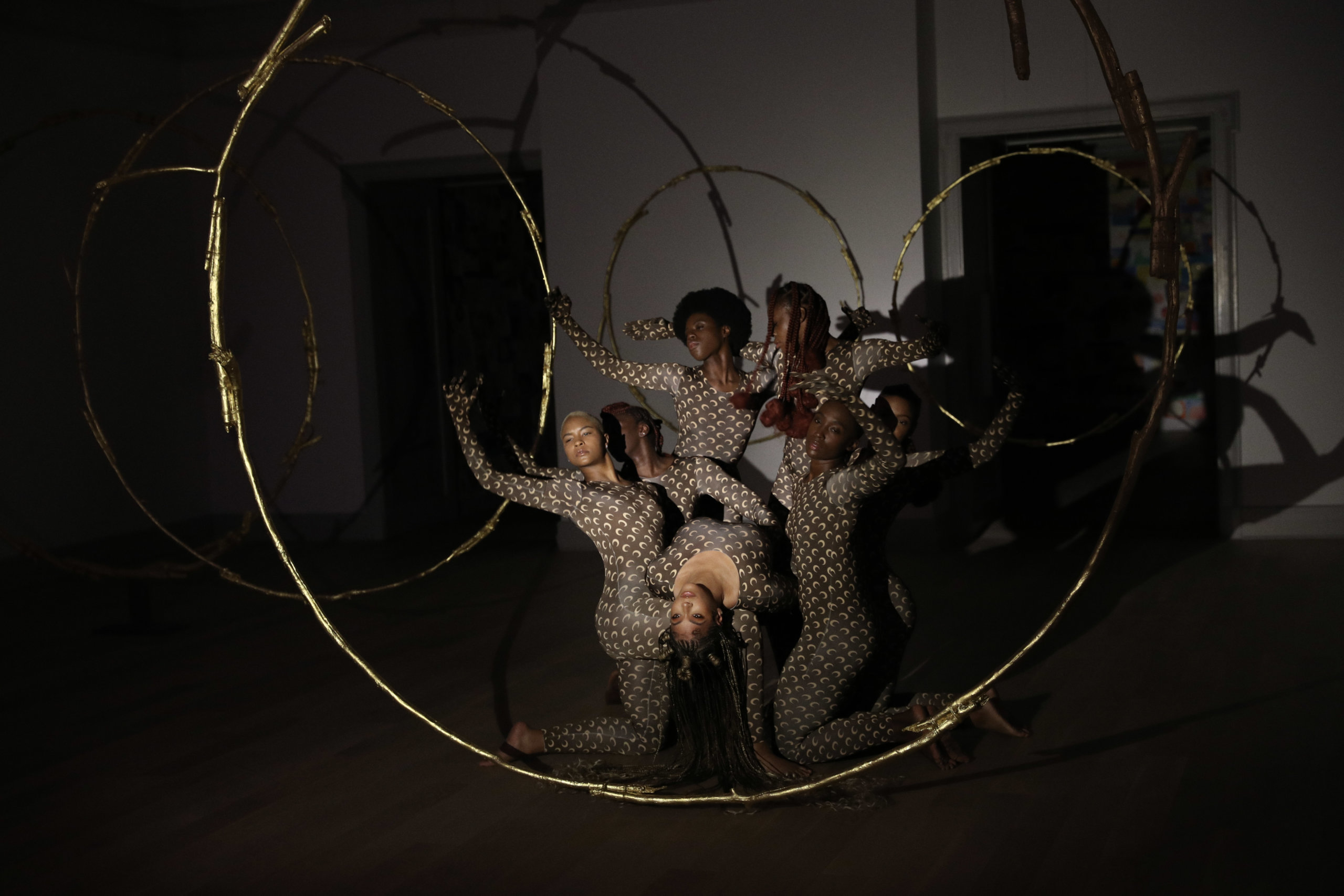
1990s–present:
— In 1996, Billy Joel performs a benefit concert at Guild Hall without taking a fee and with the first few rows being reserved for children. Later, Elvis Costello also performs a concert there—two of the biggest musicians in the world performing in this relatively small local theater.
— In 2006, Andy Warhol and Elizabeth Peyton exhibitions are prominently displayed in the galleries.
— In 2008, American Ballet Theater performs on the lawn of Mickey Straus’s home to benefit Guild Hall.
— In 2009, phased renovation of the entire building is fully completed.
— In 2010, Equus is presented in the John Drew Theater for four sold-out weeks, starring Alec Baldwin and directed by Tony Walton.
— In 2018, Laurie Anderson’s virtual reality exhibits, Chalkroom and Aloft, debut in the museum alongside her large-scale chalk drawings and a screening room playing her films.
— In 2019, Beyoncé secretly films scenes for Disney+’s Black Is King video album in the Guild Hall galleries during the Ugo Rondinone: Sunny Days exhibition.
— In 2021, Guild Hall celebrates 90 years with the release of the Guild Hall for All coffee table book and a season of programs inspired by their Academy of the Arts members, culminating in a birthday celebration on August 19 featuring the New York City Ballet and a silent dance party!
